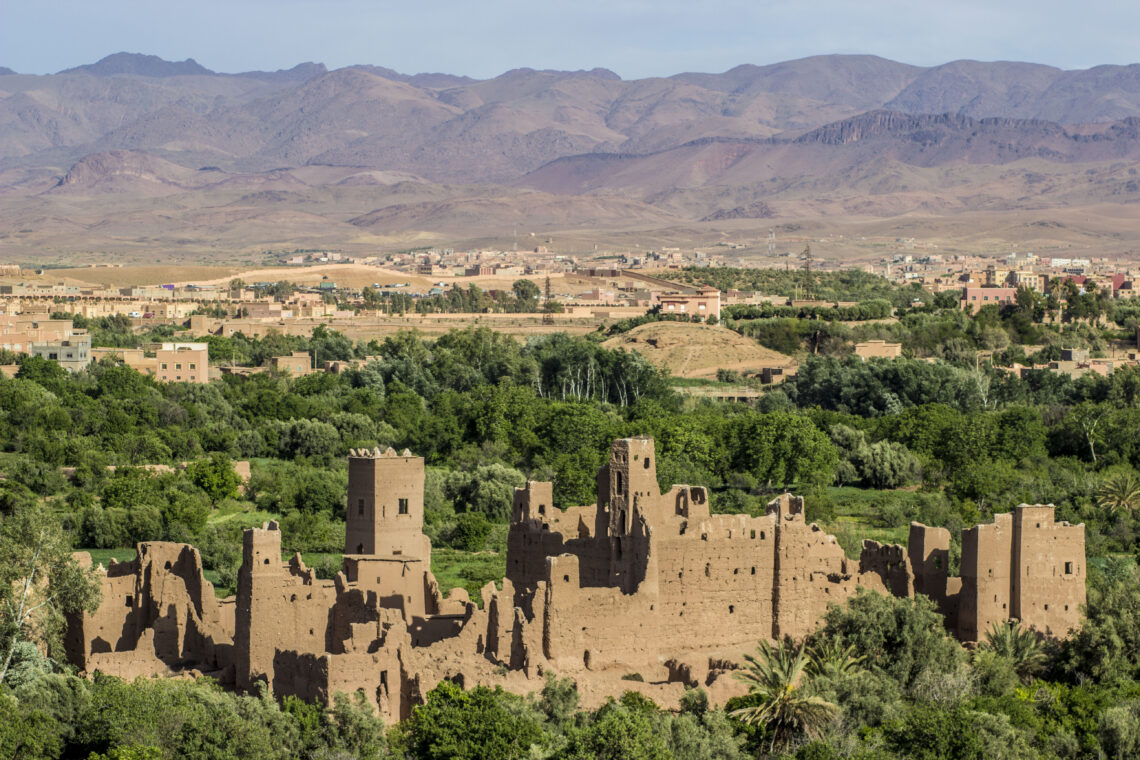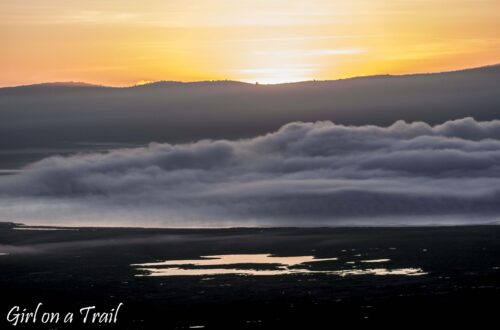
Morocco – clay fortresses, the Eye of Sauron, roses and mountain crossings
If you think Morocco is just Marrakesh, camels, and mint tea, well… you’re probably right. But once you stray a bit from the main routes and, instead of a travel agency brochure, pick up a map with hand-marked “odd” spots, you’ll encounter things that will completely change your perception of this country.
Amridil Kasbah – a Fortress from a Banknote and a Film Set
Amridil Kasbah is located on the road from the Dades Gorge to Ouarzazate. It’s another place on the map of Morocco where time stands still. A kasbah is a protected palace, citadel, or fortification, usually made of clay bricks. Kasbahs were built along trade routes, providing shelter for travelers.

Morocco currently boasts many such structures, but the Kasbah of Amridil is a unique site, adorning the Moroccan 50 dirham banknote. Its picturesque setting, nestled in the middle of the Skoura Oasis, and its traditional Berber architecture make it a truly unique place.

Noor Ouarzazate – a Moroccan technological marvel
Morocco is an incredible place where advanced engineering coexists with traditional clay kasbahs. Near the Kasbah Amridil, a tall tower resembling the “Eye of Sauron” can be seen on the horizon. This is Noor Ouarzazate – one of the largest solar power plants in the world. Imagine 4,200 football fields, but instead of grass – a sea of mirrors. Sounds like a sci-fi set? In Morocco, it’s not a movie, but an everyday occurrence. Noor (meaning “light” in Arabic – very poetic, but also very apt) is a four-part energy complex near the famous city of Ouarzazate.

It includes both traditional photovoltaic (PV) panels and more space-age technologies for concentrating solar radiation (CSP – Concentrated Solar Power). The plant’s operating principle is simple: giant parabolic mirrors track the sun, and the rays, concentrated on a tower, heat tubes filled with special oil to temperatures up to 393°C. The oil heats water, which in turn drives turbines, and these then turn into generators that convert mechanical energy into electricity. The plant has a capacity of 580 MW and is part of Morocco’s plan to use 52% of its energy from renewable sources by 2030. Thanks to this plant, Morocco has become a leader in solar energy in Africa and is reducing its dependence on imported fossil fuels. I saw a similar facility in Israel some time ago.

Kasbah Taourirt
If you ever decide to visit this place, I’m sure your first thought will be, “that fortress looks familiar.” And indeed, this place is famous from the first Gladiator film. It’s located in Ouarzazate, the so-called Moroccan Hollywood, right next to the famous Atlas Studios, which I wrote about here. The fortress looks impressive from the outside, but its interior is quite austere. Although there’s not much to see, for 20 dirhams (a pittance), it’s worth a visit, if only for the atmosphere and the feeling of walking on a film set.

Dades and Todra Gorges
Although located close to each other, these gorges represent two completely different worlds. The first gateway to the incredible Moroccan landscape is the town of Tinghir, surrounded by a green oasis with the Atlas Mountains as a backdrop.

Just beyond the city viewpoint begins the spectacular route through the Todra Gorge.

The vertical limestone walls look as if someone had built a 400-meter-high rock wall on either side of the river. Moreover, depending on the time of day, they take on various shades, from orange to pink and red. At the final section, the gorge narrows to a mere 10 meters wide.

Meanwhile, the road through the Dades Gorge is a real rollercoaster, with kilometers of serpentines, sharp turns, and no barriers. It’s truly fascinating.

The gorge is formed by red rocks with fanciful shapes. A particularly interesting rock formation is the “Monkey Fingers.” The rocks are shaped like fingers, and from a distance, you can see an entire hand rising from the valley floor.

The views aren’t the only attraction of this route. It’s also known as the “Road of a Thousand Kasbahs,” or mud fortresses. Built by the Berbers to defend against invasions, some of these fortresses are still inhabited by locals. It’s impossible to drive through Dades without noticing that life here moves at its own pace, free from the madness of large cities.

Kalaat M’Gouna – Valley of the Roses
The Dades and Todra Gorges are not the only attraction in this region. A little further south lies the enchanting “Valley of the Roses,” which transforms into a fairytale rose wonderland in May. Local women harvest tons of petals daily, which are sent to nearby factories. It’s estimated that between 3,000 and 4,000 tons of petals are harvested here between April and May. The petals are then used to make perfumes, creams, and the famous rose oils. It’s said that it takes half a ton of petals to produce one liter of this oil. Therefore, it’s no wonder that just one milliliter of it costs more than gold.

From Kalaat M’Gouna, it’s worth the drive to Bou Tharar. The road, which once required a Jeep and courage, is now as smooth as rose balm. The views? Red rocks, a green valley, and spectacular views, especially at sunset, make this 30-kilometer stretch of road an incredible experience.


Tizi n’Tichka, or Pasture Pass
Tizi n’Tichka is the rather unusual name for the highest and most winding road in Morocco. At an altitude of over 2,000 meters, you can see the most beautiful mountain landscapes of the High Atlas. The High Atlas is the highest mountain range in this part of Africa. However, Tizi n’Tichka is no ordinary mountain pass—it is a natural border between two worlds: the western Mediterranean, with its palm trees and olive groves, and the arid eastern part, covered in the sands of the Sahara. This road has been traveled since ancient times by caravans transporting goods from East Africa to Marrakesh. Back then, only narrow, winding mule tracks were available.

It wasn’t until the early 20th century that the French decided to build a road here, which was then considered a marvel of engineering. Today, the route is wider and much safer, although it is sometimes closed during heavy snowfall. Tizi n’Tichka delights with its diversity, with views that change with every kilometer. It’s the best place to experience the atmosphere of wild and rugged Morocco.

All these stops form the basis of a two-day tour of central Morocco. Driving here feels like a journey through time and space – passing medieval kasbahs, futuristic engineering structures, and incredible mountain landscapes.




